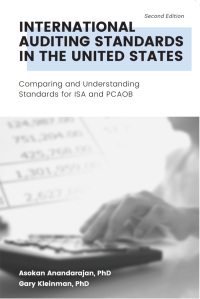Deborah Lee is a financial analyst working for a large chain of discount retail stores. Her company is looking at the possibility of replacing the existing fluorescent lights in all of its stores with LED lights. The main advantage of making this switch is that the LED lights are much more efficient and will cost less to operate. In addition, the LED lights last much longer and will have to be replaced after ten years, whereas the existing lights have to be replaced after five years. Of course, making this change will require a large investment to purchase new LED lights and to pay for the labor of switching out tens of thousands of bulbs. Deborah plans to use a 10-year horizon to analyze this proposal, figuring that changes to lighting technology will eventually make this investment obsolete. Deborah's friend and coworker, Dean, has analyzed another energy-saving investment opportunity that involves replacing outdoor lighting with solar-powered fixtures in a few of company's stores. Dean also used a 10-year horizon to conduct his analysis cash flow forecasts for each project appear below. The company uses a 10% discount rate to analyze capital budgeting proposals. Year LED project Solar project 0-RM4.200,000 - RM 500.000 1 700,000 60,000 2 700,000 60,000 3 700,000 60.000 4 700,000 60.000 $ 1,000,000 6 700,000 60.000 700,000 60.000 8 700,000 60,000 9 700,000 60.000 10 700,000 60,000 7 a) What is the Net Present Value (NPV) of each investment? Which investment (if either) should the company undertake? (5 marks) b) Dean approaches Deborah for a favor. Dean says that the solar lighting project is a 'pet' project of his boss, and Dean really wants to get the project approved to curry favor with his boss. He suggests to Diana that they roll their two projects into single proposal. The cash flows for this combined project would simply equal the sum of the two individual projects. Calculate the NPV of the combined projects. Does it appear to be worth doing? Would you recommend investing in the combined project? (4 marks) c) Do the net present value (NPV) and internal rate of return (IRR) always agree with respect to accept-reject decisions; with respect to ranking decision? Explain. (3 marks) .. MY MAXIS 1:48 AM 10% Touch to return to call 04:56 May2020_BB212_Assignment q... his analysis cash flow foreca The company uses a 10% budgeting proposals. Year LED project Solar project 0-RM4,200,000-RM500,000 700,000 60,000 2 700,000 60,000 3 700,000 60,000 4 700,000 60,000 5 1,000,000 60,000 6 700,000 60,000 7 700,000 60,000 8 700,000 60,000 9 700,000 60,000 10 700,000 60,000 a) What is the Net Present Which investment (if undertake








